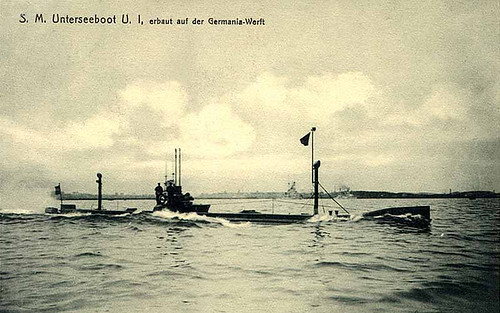Chapter 266: The Underwater Arms Race, Part VI: Prepare to dive, full steam ahead!

The French interest to submersible warships had been waxing and waning before the determined phase around the turn of the century.
A key event took place in 1898, when the French Navy announced an open international submarine design competition. Maxime Laubeuf won with his Narval.
It was a double-hulled craft, with an inner hull strongly constructed to resist water pressure, while the outer hull was lightly built and optimised for surface performance.
The space between the hulls was filled with ballast and trim tanks. Conceptually a surface torpedo boat with the ability to submerge to make its escape after an attack or for a chance to launch an ambush from underwater, the Narval was built more of an evolution of an older idea rather than the revolution it turned out to be.
The 1901 French naval budgetary estimates called for the construction of 23 new submarines to add to the existing stock of about 14. During 1901 manoeuvres Gustav Zede independently transited a distance of 149nm from Toulon to Ajaccio, attacked the French Mediterranean Fleet as it departed, and the umpires concluded that it had successfully torpedoed battleship Charles Martel.
More trials followed in 1903. The French had been testing two types of vessels capable of diving underwater: the sousmarin had only electric motor propulsion powered by a large battery, and had to return to port to be recharged. Meanwhile a submersible had dual propulsion, and used either steam, petrol, kerosene or diesel power for surface travel. When underwater, it operated under battery propulsion.
In 1903 the two different submarine types were pitted against one another: the submersible Aigrette competed against sousmarin “Z.” Submersible was deemed better, and the French Navy decided to build only submersibles in the future.
Like most early French submarines, the early submersibles were mostly steam powered.
As it was, all potential surface propulsion systems for submersible vessels were riled with technical difficulties and disadvantages.
Steam plants allowed high surface speeds and the technology was mature, but they required long dive preparations which could last from 5 to more than 10 minutes. And once underwater, they could not dissipate the heat that the steam plants produced, quickly turning the insides of the boat too hot for the comfort of the crew.
Paraffin, known as kerosene in the US, combusted with heavy smoke. It required long ventilation pipes that had to be rigged for diving, thus slowing submergence considerably. The smoke was also highly visible from afar.
Gasoline did not have this problem, but gas fumes were much more volatile, and gasoline vapour explosions were not uncommon. In addition gasoline vapours were dangerous to the crew, who would risk nausea and even death if exposed to them for prolonged periods of time.
The solution to this dilemma was obvious in retrospect: Utopian socialism.




